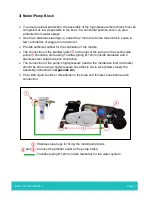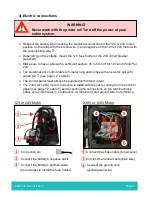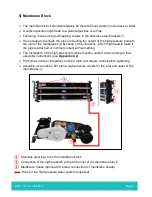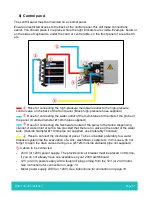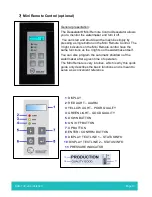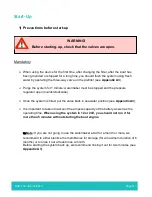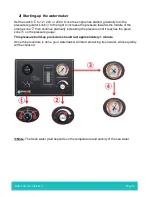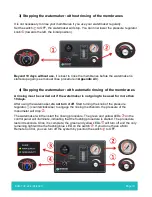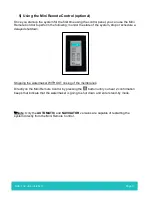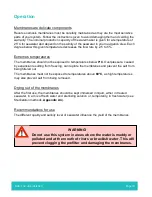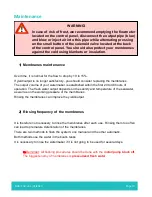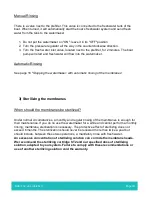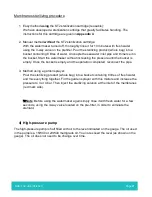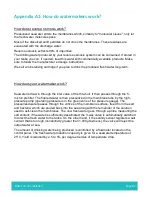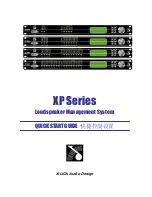
DUO-100 v2.4 (04/2021)
Page 23
Appendix A1: How do watermakers work?
How does reverse osmosis work?
Pressurized seawater enters the membranes which, similarly to "molecular sieves", only let
the fresh water molecules pass.
Most of the dissolved solid particles do not cross the membranes. These residues are
evacuated with the discharge water.
Reverse osmosis extracts 99% of impurities.
The drinking water produced by your reverse osmosis system can be consumed. If stored in
your tanks you can, if needed, treat this water with commercially available products. Make
sure to follow the manufacturer’s dosage instructions.
We sell a mineralizing cartridge if you plan to drink the produced fresh water long-term.
How does your watermaker work?
Seawater is draw in through the inlet valve of the thru-hull. It then passes through the 5-
micron prefilter. The filtered water is then pressurized in the membrane tube by the high-
pressure pump (operating pressure is in the green zone of the pressure gauge). The
pressurized water passes through the orifices of the membrane surface, freed from the salt
and bacteria, which are poured back into the sea along with the remainder of the solution
used to self-clean the membranes. The now fresh water goes through a probe measuring the
salt content: if the water is sufficiently desalinated, the 3-way valve is automatically switched
to direct the fresh water to the tanks. On the other hand, if the salinity sensor registers a salt
content that is too high (conductivity greater than 1,000 μSiemens), the valve will reject the
output water at sea.
The amount of drinking water being produced is controlled by a flowmeter located on the
control panel. The fresh water production capacity is given for a seawater temperature of
25°C. Yield is reduced by 2.5 to 5% per degree Celsius of temperature drop.

